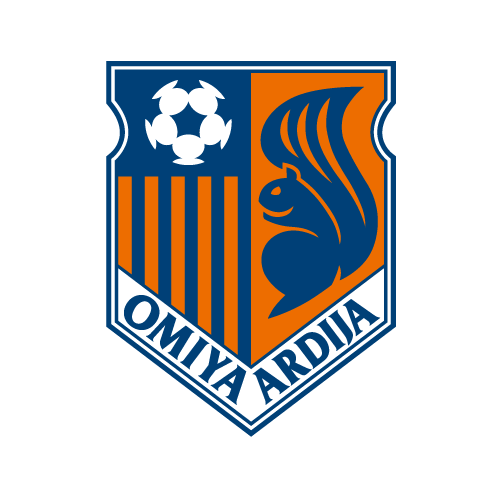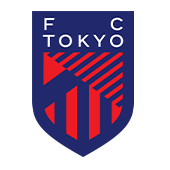GAME RESULTGame Result
Sec. 34 1999/11/08 (Mon)
Audience 2,826 people
Weather: Cloudy, No precipitation Temperature: 17.0 degrees Humidity: 83%
Referee: Toshimitsu YOSHIDA Assistant Referee: Ko OISHI / Ichiro INUKAI Fourth Official: Minoru TOJO
J2 Sec. 34
Omiya

HOME
Omiya Ardija
1-0
Match Ended
First Half0-0
Second Half0-0
First Half Extra Time0-0
Extra Time Second Half1-

AWAY
FC Tokyo
| Omiya Ardija | FC Tokyo | |
|---|---|---|
|
106' Ken IWASE |
Scorer | |
|
45' Taichi Sato → Akinori Kosaka 72' Mahiro Miyashita → Yuji Uemura 80' Tetsuro UKI → Kazushi Isoyama |
Player Substitution |
38' Takashi OKUHARA → Hiroki SHINJO 62' Kensuke KAGAMI → Amaral 104' Toru KABURAGI → Hayato OKAMOTO |
| 12 | Shoot | 8 |
| 5 | CK | 9 |
| 15 | FK | 20 |
|
13' Seiichiro Okuno |
Warning | |
| Ejection |
| GK | 1 | Jun Shirai |
| DF | 14 | Hideyuki Ujiie |
| DF | 2 | Seiichiro Okuno |
| DF | 3 | Yan |
| DF | 5 | Ryugo Okamoto |
| MF | 17 | Miyashita Masahiro |
| MF | 4 | Tetsuro UKI |
| MF | 8 | Ken IWASE |
| MF | 6 | Masato HARASAKI |
| MF | 10 | Mark |
| FW | 12 | Taichi Sato |
| GK | 20 | Hidetaka Watanabe |
| MF | 15 | Masato Saito |
| MF | 16 | Akihiro Kosaka |
| MF | 19 | Yuji Uemura |
| FW | 13 | Kazushi Isoyama |
| GK | 22 | Takayuki SUZUKI |
| DF | 12 | Osamu UMEYAMA |
| DF | 3 | Sandro |
| DF | 26 | Takayuki KOMINE |
| DF | 8 | Ryuji FUJIYAMA |
| MF | 7 | Satoru ASARI |
| MF | 15 | Almir |
| MF | 14 | Yukihiko Sato |
| MF | 13 | Kensuke Kagami |
| MF | 10 | Takashi OKUHARA |
| FW | 17 | Toru KABURAGI |
| GK | 32 | Hiroyuki Nitao |
| DF | 4 | Mitsunori YAMAO |
| MF | 6 | Hiroki Shinjo |
| MF | 18 | Hayato OKAMOTO |
| FW | 11 | Amaral |
[Player and Coach Comments]
Can they secure promotion!
In this round (Sec. 34), with the top team Kawasaki F having secured promotion early in the match held on Friday (11/5), only one (J1) spot remains. Currently, the two teams fiercely battling for this spot are 2nd place Tokyo and 3rd place Oita. Niigata and Sapporo still have slim chances, but it is no exaggeration to say that it has basically come down to these two teams. At such a time, an ideal opportunity for promotion has come for Tokyo. Because Oita lost the match held on Saturday (11/6), if Tokyo, currently with 61 points, wins the Omiya match on this day, they will reach 64 points, opening a 5-point gap over Oita (59 points). With two matches remaining, if Tokyo wins the next round (Sec. 35) home game against Sendai at Komazawa (+3 → 67), even if Oita wins (+3 → 62), the 5-point gap will remain with one match left, securing Tokyo’s promotion. To ensure promotion at home no matter what, it was necessary to definitely secure 3 points in the Omiya match on this day and put Tokyo one step away from promotion.
Struggling against Omiya's compact soccer
This season, Tokyo has won all three matches against Omiya without conceding a goal, but Omiya, who has been improving their form in recent games, showed that momentum in this match as well. At the very start, Tokyo aggressively attacked using Yukihiko on the right side and Okuhara on the left, controlling the ball in Omiya's territory, but that was short-lived. Omiya quickly adapted to the pace, kept their defensive line shallow, and began applying intense pressure moving forward. Tokyo tried to break down the defense by circulating the ball at a fast tempo, but due to the slippery pitch caused by rain just before the match, their pass accuracy dropped, and only three passes connected successfully. Then, Tokyo frequently used long balls to send the speedy Okuhara and Kaburagi behind the defense, but Omiya's defensive line was strong in aerial duels, and simple, uncreative balls were repeatedly repelled. The only real chance came in the 33rd minute on the right side when Yukihiko passed cleanly to Almir, then back to Yukihiko, who forcefully shot from a tight angle. Other than that, Omiya's strengths dominated the game. When defending, Omiya's forwards avoided reckless deep chasing and concentrated players near the central circle, applying strong pressure on Tokyo's players and the ball entering that area. To intensify pressing in this zone, Omiya kept their defensive line shallow, maintaining a distance of about 20 to 30 meters between the forwards and the last defensive line. Under this intense pressing in a narrow area, Tokyo's Kagami and Kaburagi could not become focal points upfront, and Almir and Yukihiko failed to deliver effective passes to break through, resulting in no attacking shape. Frustrated defender Fujiyama tried to dribble forward, his specialty, but was stopped by a third defender after bypassing two opponents. Conversely, when Omiya regained possession, defensive midfielders Ukki and Iwase became the starting points of attacks, quickly feeding the ball forward. Upfront, on the left side, midfielder Harasaki held the ball, timing it perfectly for the speedy and ultra-attacking left-back Okamoto to make lively overlaps and deliver accurate crosses. Meanwhile, midfielder Mark, who moved freely in midfield with few touches, spread the ball left and right to build attacks. Omiya's transition from defense to attack was swift, and overall, they played a fast-tempo game with few touches, overwhelming Tokyo.
Tokyo strikes back with the introduction of KING Amaral!
Tokyo struggled to create a base for their attacks in the first half and was instead troubled by counterattacks after losing the ball. However, they gradually began to fight back in the second half. With superior stamina, Tokyo launched fierce attacks right from the start of the second half. There were moments of danger due to Omiya's left-back Okamoto joining the attack, but with high concentration, especially from Komine and Sandro, they managed to repel the threats. Conversely, as Okamoto pushed forward, spaces opened up for Yukihiko and Umeyama, increasing their chances. At this point, Tokyo made a move. The introduction of
Nightmare moment...
As the match entered extra time, the situation changed once again. When Amaral, who had been moving vigorously for about 30 minutes after coming on in the second half, suddenly lost his energy, Tokyo's attack lost momentum. On the other hand, Omiya regained their momentum, with MF Mark joining the front line, spreading the ball to both sides from post play, and delivering crosses from the flanks one after another. Tokyo's overall line dropped, and they faced a tough situation, continuously conceding corner kicks to Omiya. One minute into the second half of extra time, when Mark sent the ball out to the left side, MF Kosaka sharply crossed it back, which deflected off a Tokyo defender who went to cover, changing the ball's course directly to the unmarked Iwase charging in front. He powerfully headed it in, sealing the fate of the match. The 106-minute fierce battle, which put Tokyo on the brink of promotion to J1, ended abruptly. The direct confrontation with Oita on September 25 remains decisive.
As soon as they became aware of promotion, they suffered four consecutive losses, but stopped the losing streak in the last match against Kofu, and on this day, Tokyo faced a chance to make significant progress towards promotion but tasted bitter defeat. Is the 'Road to J1' really that long and arduous? It's a journey that cannot be described simply as 'pressure'; it's the first time experiencing a 'painful and difficult' path. However, if we cannot overcome this hardship, we are not genuine! To ensure that the great confidence and experience gained from this season's 'Nabisco Cup' are not wasted, let's bet everything on the remaining two matches! We just need to win the last two! First, on November 14, let's crush Sendai at Komazawa!